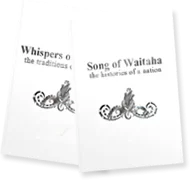Building Foundations: How Understanding Residential Construction Contracts Respects Ancestral Wisdom
Helpful Hints for Builders and Owners in the New Zealand Residential Construction Industry
To understand the principles of residential construction contracts, perhaps we should first look to ancient teachings, passed down through centuries of tradition. The Waitaha people in particular, offer a unique perspective on how to construct a home. With the highest respect paid towards the earth, water, sky and community, it is the Waitaha people’s belief that when something is created with the greatest respect shown for the land, the strongest bonds of peace and harmony are formed. Building a home is no exception. In Waitaha tradition, the iwi leaders, elders and women of the community would carry out the planning process, which helped to ensure that everyone was heard and that the wisest decisions were made for the betterment of the entire community and future generations. At the same time as a “document” is created in order to define the parties relationship (the comprehensive residential construction contracts), a “structure” that represents the relationship is built. In this case it is the dwelling house that is built. The Waitaha people have an important ancestral acknowledgement made at the time of a house construction, as this creates the customary bond between the people and house.
These bonds have long-standing effects and resonate throughout the region. A house, like a contract, requires stable foundations. If the foundations of a contract are not defined, there will be room for ambiguity and misinterpretation, and what should be a mutually beneficial undertaking may instead have repercussions for generations to come. In connection with a house, if the foundations are not strong enough, the safety of the house will be compromised. In New Zealand, there are many high-quality residential dwelling houses, which have been well constructed using suitable materials. However, the practices of the past may have been based on erroneous scientific understanding with respect to the materials used to construct these dwellings. It is possible that flaws may become apparent in the future. Therefore, ideally, the foundations of a house and a contract should be well defined. For example, a clear timeline should be provided, suitable workmanship should be undertaken and the plans and specifications should be adhered to.
The Waitaha people would ensure that ample time was given to consider the plans, and everyone present was involved in the discussions. Waitaha housing traditions have been followed by associations with custom (common misinterpretation), it is believed the best houses are those which ensure everyone’s opinion is respected. When conflicts arise, communication between the parties is the mechanism by which the disputes are resolved. This is not always straightforward, however, guiding principles of peace and respect are important in decision making and settlements must benefit everyone and be fair and equitable. In order to build healthy relationships, open and ongoing communication between the building parties is necessary in order to protect their interests and to fulfil construction plans.
Buying a home offers the most expensive purchase in life and the biggest investment of time, energy, capital and emotions especially for an untouched bareland purchase. Purchasing land to build on a site, without a resource consent or building plans, can be a big risk. For example, financial losses arising where there are unsuitable technical, cultural, health, legal and/or structural conditions can have a long-lasting effect. The Waitaha people are conscious that the effects of environmental choices (i.e. water diversion projects) can deter wildlife and alter landscape. These choices must take into consideration effects on the surrounding flora and fauna, air and water conditioning, and spiritual and cultural meanings. They also take account of future generations and at the very least an acknowledgment of the past. The results of these choices and their impact are either positive or negative.
The development of a residential dwelling house is aligned to the wishes of the people, just as the development of a contract mirrors the wishes of the parties. In order to ensure that a contract is valid, reasonable and enforceable, both parties will agree to the creation of a residential construction contract where usable materials are brought together in harmony, in line with plans and specifications and for the benefit of the entire community.
A check-list is often used to ensure that the parties have met their obligations under the contract. Important points to keep in mind while tendering are: It is in everybody’s interest to ensure that a residential construction contract is followed, and the expectations of all parties are understood. Improving the understanding of residential construction contracts should go a long way to enhancing the creation of sound homes in New Zealand. As discussed above, the Waitaha people have long sought to protect all parties (owner, builder, sub-contractor and subcontractor) and avoid conflict by being reasonable, equitable, creating lasting bridges within the community and getting the house built.


